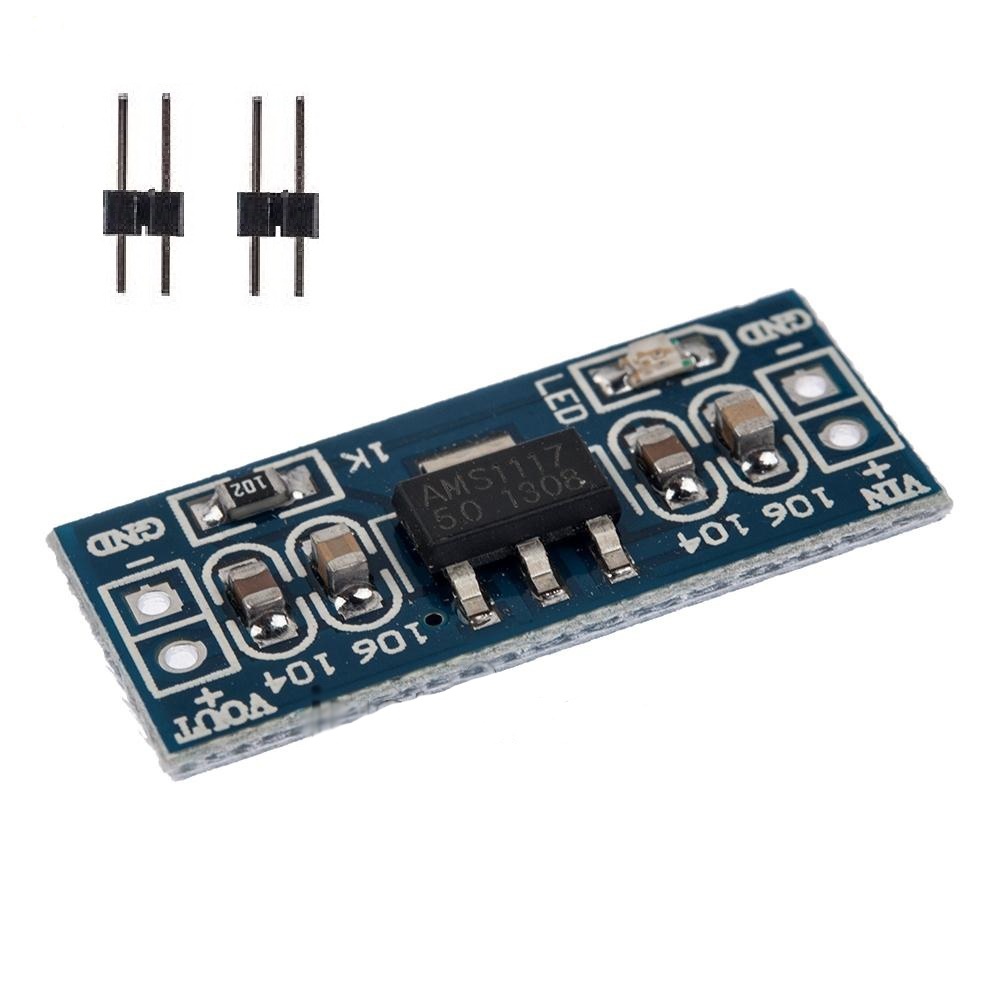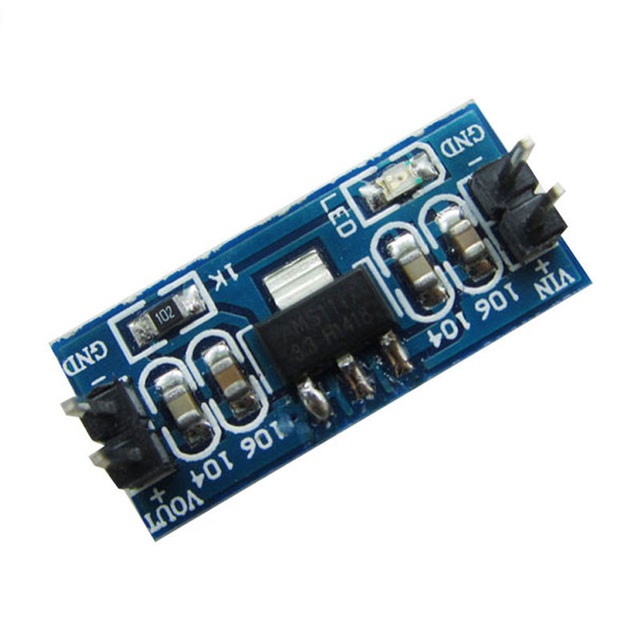The AMS1117 is a popular low-dropout (LDO) voltage regulator that can be used to convert higher DC voltages to a regulated 5V output. Here's a breakdown of its key features and applications:
Key Features:
- Low Dropout Voltage: Maintains a stable output voltage even with low input-to-output voltage differentials.
- Fixed Output Voltage: Provides a precise 5V output.
- High Current Capability: Can deliver up to 1A of output current.
- Thermal Shutdown Protection: Protects against overheating.
- Short-Circuit Protection: Prevents damage in case of accidental short circuits.
- Easy to Use: Requires minimal external components.
Applications:
- Arduino and Microcontrollers: Powering Arduino boards and other microcontrollers.
- Raspberry Pi: Providing a stable 5V supply for the Raspberry Pi.
- Electronic Projects: powering various electronic circuits and devices.
- Battery-Powered Devices: Regulating voltage from batteries.
- LED Lighting: Driving LEDs at a constant voltage.
How to Use:
- Select Input Voltage: Ensure your input voltage is at least 0.8V higher than the desired output voltage (5V in this case).
- Connect Input: Connect the input voltage to the IN pin of the AMS1117.
- Connect Ground: Connect the ground pin of the AMS1117 to the ground of your circuit.
- Connect Output: Connect the output pin (ADJ) of the AMS1117 to the load that requires 5V.
- Add Bypass Capacitor: Optionally add a bypass capacitor (e.g., 10uF) between the IN and OUT pins for improved stability.
Additional Considerations:
- Heat Dissipation: For higher currents or higher input-to-output voltage differentials, consider using a heatsink to dissipate heat.
- Current Limiting: If you need to limit the output current, you can add a series resistor between the output pin and the load.






